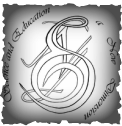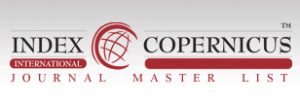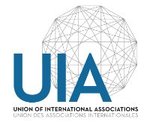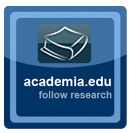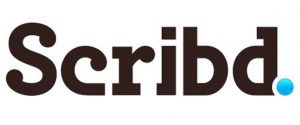Science and Education a New Dimension
Iss. 249. 2021.
A. Anisimov Arabic Political Caricature. History and Poetics
https://doi.org/10.31174/SEND-HS2021-249IX44-01
Abstract. In the modern Arab world caricatures have undergone an evolution from humorous illustrated anecdotes to a considerably influential and socially valuable form of literature and visual art [5, p. 11], within approximately a century of development. However caricatures are still relatively novel and unorthodox, mainly because of their capacity to depict social problems in a way that would interest native and foreign readership through elementary symbolism and simple language. Also, linguistically, caricatures are usually rich with references to historical data, which make them suitable material for the present study. The article revises the linguistic and visual features of the genre based on Arabic caricatures dedicated to the Second Lebanon War (2006).
Keywords: cartoon, caricature, détournement, Middle East, politics, war.
A. Anisimov Arabic Political Caricature. History and Poetics
О. О. Lezhnev Formation of graphic culture of the artist in the context of formation of nonconformal movement in culture of Ukraine (70s of the XX - beginning of the XXI century)
https://doi.org/10.31174/SEND-HS2021-249IX44-02
Emphasis is placed on the relevance of defining the graphic culture of the artist in the context of the formation of the nonconformist movement in the artistic culture of Ukraine as one of the components of self-realization of the creative potential of art of the 70s of the XX – early XXI century. The cultural and historical situation regarding the formation of Kyiv, Kharkiv, Lviv schools of graphic art is analyzed. The logic of the transformation of nonconformism into postnonconformism in connection with the postmodern guidelines of the 90s is traced.
Keywords: graphic art, culture, nonconformism, postnonconformism, art school.
О. О. Lezhnev Formation of graphic culture of the artist in the context of formation of nonconformal movement in culture of Ukraine (70s of the XX – beginning of the XXI century)
A. Zadoia, I. Syzonenko Stanislav Zhukovsky: an underrated artist
https://doi.org/10.31174/SEND-HS2021-249IX44-03
Abstract. Stanislav Zhukovsky belongs to a galaxy of talented Polish artists, whose name and whose works have not been properly recognized in modern Poland. A study of his life and works at the end of the 19th – beginning of the 20th centuries demonstrates the great love of this artist for Poland, nature and art. Since the end of the 90s of the last century, a revival of interest in the artist’s works has been observed, which is confirmed by an increase in the number of successful sales of paintings by S. Zhukovsky at auctions. If the first auctions were held mainly in the artist’s homeland, then in subsequent years the center of trade moved to British auctions of world renown. The analysis showed an increase in the average price of paintings sold, which confirms the investment attractiveness of the paintings of this artist.
Keywords: Stanislav Zhukovsky, painting auctions, average auction price of a painting.
A. Zadoia, I. Syzonenko Stanislav Zhukovsky: an underrated artist
L. M. Budniak Innovatively Active Enterprises Problems and the Ways to Solve Them
https://doi.org/10.31174/SEND-HS2021-249IX44-04
Abstract. Innovative activity in today’s conditions is the means to maintaining and effective functioning of enterprises in the market. It has long been the main condition for their competitiveness and requires systematic management. In the XXI century those enterprises that are innovatively active will win in the competition. If the company is not the leader of the industry, it is innovation activity that becomes the key to its survival in the market. The article offers the views of various scientists on the major points of innovation activity analysis, indicators and areas of this process research. The dynamics of quantitative and qualitative indicators of enterprises involved in the process of innovation, innovative technologies, products, incurred costs, their distribution and the obtained effect are analyzed. The problems of innovatively active enterprises are revealed and the ways of their solution are offered.
Keywords: Innovations, innovative activity, innovative products, innovative technologies, current expenses, capital expenses, incomes, effect.
L. M. Budniak Innovatively Active Enterprises Problems and the Ways to Solve Them
E. V. Dobrovolska Resource Potential Efficiency of Agricultural Enterprises
https://doi.org/10.31174/SEND-HS2021-249IX44-05
Abstract. Resource potential efficiency of agricultural enterprises is an objective necessity and an important prerequisite for the development of the agricultural economy. One of the modern agricultural enterprises features is the quantitative, qualitative and structural imperfection of their resource potentials, which is due to large losses of resources in the process of land reform and the difficult financial situation of agriculture. This article considers the level and trend of changes in the company’s production resources. The economic efficiency of using the resource potential of the enterprise is analyzed.
Keywords: agricultural enterprise, resource potential, efficiency of use, indicators, production resources.
E. V. Dobrovolska Resource Potential Efficiency of Agricultural Enterprises
B. O. Pavlichenko Economic impact of COVID-19 pandemic measures on functioning of the enterprises from the selected branches in Poland
https://doi.org/10.31174/SEND-HS2021-249IX44-06
Abstract. The articles studies the effects of pandemic measures taken by the Central European states in order to minimalize economic and human losses. The research bases on correlation between the goals and a final effects of the measure. The effects are analysed from sociological, humanitarian, financial and economic perspective. The analysis covers both current and potential effects in terms measured by such indexes as alternative cost and non-achieved profit. The study refers to microeconomic and macroeconomic consequences of such measures.
Keywords: economic effect, pandemic, lockdown, profit, loss.
B. O. Pavlichenko Economic impact of COVID-19 pandemic measures on functioning of the enterprises from the selected branches in Poland
T. N. Dublikash Church and Revolution: Comparative Analysis of the Struggle for Spiritual Power on the Example of the Great French Revolution, the Ukrainian Revolution of 1917-21 and the Ukrainian Revolution of Dignity
https://doi.org/10.31174/SEND-HS2021-249IX44-07
Annotation. The article provides a comparative analysis of the attempts of the state to influence the institution of religion after revolutionary events on the example of the creation of the OCU in Ukraine in 2018, the UAOC in 1919 and the adoption of the “Civil order of the clergy” in France in 1790. The role of the state in initiating the transformation of church relations, the reaction of the clergy to these initiatives, the split between the higher and lower clergy on controversial issues, as well as protests among the parishioners are analysed.
Keywords: comparative historical approach, revolution, church, state, old-regime institutions, identity.
T. N. Dublikash Church and Revolution: Comparative Analysis of the Struggle for Spiritual Power on the Example of the Great French Revolution, the Ukrainian Revolution of 1917-21 and the Ukrainian Revolution of Dignity
R. S. Koval, O. V. Romanchuk, N. O. Bazyliak, L. V. Matlashenko Gymnasium Professor Ivan Dobushchak (1883–1965)
https://doi.org/10.31174/SEND-HS2021-249IX44-08
Abstract. The article briefly reviews the biography of Ukrainian teacher Ivan Dobushchak (1883–1965). He was from Stryi town in Galicia. Before World War I professor Dobushchak worked at Stryi gymnasium, then at Ukrainian Academic Gymnasium and Gymnasium of the Basilian Sisters in Lviv. After World War II he taught German and Latin at Lviv school № 44. According to the memoirs of former pupils, Ivan Dobushchak was a distinctive representative of Ukrainian interwar period best teachers.
Keywords: Ivan Dobushchak, Stryi, Lviv, gymnasium, professor.
R. S. Koval, O. V. Romanchuk, N. O. Bazyliak, L. V. Matlashenko Gymnasium Professor Ivan Dobushchak (1883–1965)
L. Pshenychna, O. Skyba Transversal competencies as a new universality form of specialist’s with higher education training
https://doi.org/10.31174/SEND-HS2021-249IX44-09
Abstract. To successfully solve the tasks and integrate national education into the European and world educational space, today requires the new quality professionals training – able to have critical and innovative thinking, media and information literacy, leadership skills, quickly navigate in nowadays rich entrepreneurial space, ability to work, make non-standard decisions, learn and develop throughout life. The basis for the acquisition of transversal competencies by students, positioned as non-academic, focused on the general skills development, the characteristic feature of which is their universality and possibility use in any profession.
Keywords: transversal competencies, higher education, educational process, transculturality and transversality, leadership qualities.
L. Pshenychna, O. Skyba Transversal competencies as a new universality form of specialist’s with higher education training
Y. Kotets Formation existentialist beliefs of V. Stus
https://doi.org/10.31174/SEND-HS2021-249IX44-10
Abstract. The reasons for V. Stus’s appeal to the philosophy of existentialism, psychological and historical conditions for writing existential works are studied; the intellectual phenomenon of the writer in the Ukrainian literature is considered. The article considers the way of V. Stus to build his own version existentialism.
Keywords: Existentialism, existence, the problem of choice, inner experience.
Y. Kotets Formation existentialist beliefs of V. Stus
G. A. Adamyan The Role of Hotel System in Travel Industry
https://doi.org/10.31174/SEND-HS2021-249IX44-11
Abstract. Hotel industry is a type of business based on the close interaction of a variety of services including accommodation and food services. The competitive nature of this industry avails customers of the opportunity to receive benefits from low-price hotels, and this can be accounted for by the large choice of hotels offered. Very often hotel companies have to launch new methods and new types of services in order to attract larger flows of customers. Contemporary technological progress undoubtedly creates new and more reliable possibilities for the customers to feel much more comfortable, to save their valuable time in the process of hotel reservation and so on. This in its turn adds dynamism to the development of hotel management and travel industry at large.
Keywords: hotel industry, hotel services, reception and accommodation service, food service, hotel security system, additional services.
G. A. Adamyan The Role of Hotel System in Travel Industry
T. O. Prystupenko Legal regulation of media activity in the context of scientific discourse
https://doi.org/10.31174/SEND-HS2021-249IX44-12
Abstract. The subject area of scientific discourse on the legal regulation of media activities is considered. The specifics of the scientific discourse on ensuring the right to freedom of speech, regulating the work of journalists, preventing violations of freedom of speech, the need to limit the coverage of information, analysis of foreign experience in legislative support of the media, legal regulation of electronic media. The tendencies of involvement of the expert community in the scientific discourse – lawyers-practitioners, journalists, representatives of the media and public organizations – are revealed.
Keywords: media, media activity, legal regulation, scientific discourse, mass media.
T. O. Prystupenko Legal regulation of media activity in the context of scientific discourse
R. V. Radchyk «Kharkiv» Orthography on the Pages of the Newspaper «Volyn» (1941-1944)
https://doi.org/10.31174/SEND-HS2021-249IX44-13
Abstract. The article studies the main provisions of the cathedral Ukrainian orthography of 1928 in the publications of the Rivne newspaper «Volyn» (1941-1944), which was published during the German occupation of Ukraine. The relevance of the study is caused by the need to show the struggle of the Ukrainian patriots in this difficult historical period for assertion of the true Ukrainian language as the language of national identity. The attention is focused on the fact that its true graphics, spelling and punctuation was returned to the Ukrainian language many years later.
Keywords: newspaper, publications, spelling, editorial staff, nation, readers.
R. V. Radchyk «Kharkiv» Orthography on the Pages of the Newspaper «Volyn» (1941-1944)
A. V. Volyk The university concept as a structural element image creation of the ukrainian higher school (the weekly "Education of Ukraine" as axample)
https://doi.org/10.31174/SEND-HS2021-249IX44-14
Abstract. The article explores the conceptual field of the concept UNIVERSITY of the official publication of the Ministry of Education and Science of Ukraine “Education of Ukraine”, analyzes its subconcepts, as well as the role of concepts in the process of education. It is determined that the pages of “Education of Ukraine” are dominated by subconcepts of positive evaluation value. The dominant subconcepts of the conceptual field UNIVERSITY in the newspaper are REFORM AND QUALITY OF EDUCATION. In terms of the number of thematic materials, they are the largest and have a positive evaluation value. Negative or partially negative are the subconcepts CORRUPTION, PLAGIARISM, DISSERTATION, FINANCING. However, materials with such subconcepts are almost non-existent, they are isolated.
Keywords: university image, image formation, journalistic image, media image, conceptual field, subconcept.
A. V. Volyk The university concept as a structural element image creation of the ukrainian higher school (the weekly “Education of Ukraine” as axample)
